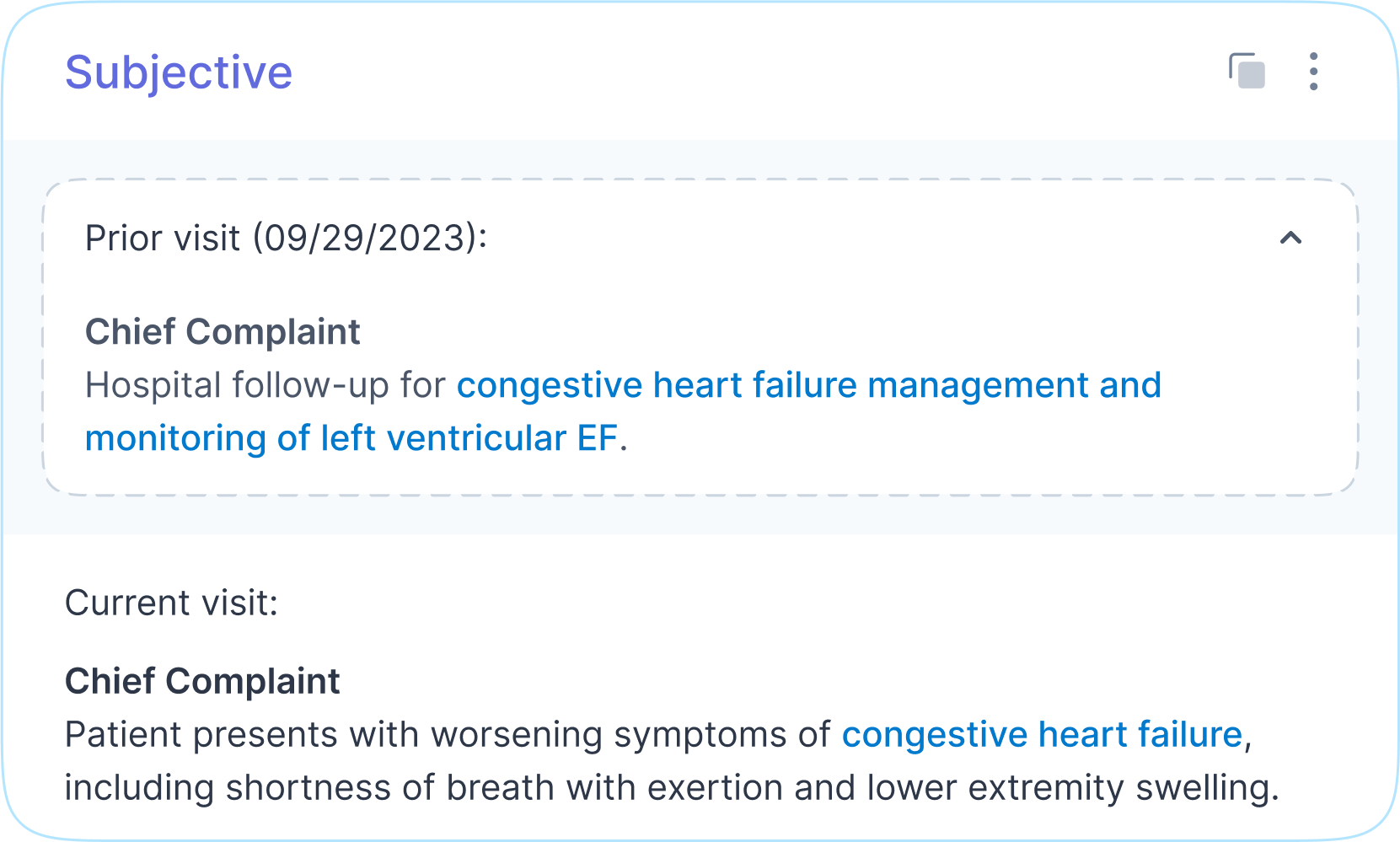Context Awareness in Ambient AI Clinical Notes: Responding to the Moment of Care
Context awareness in AI medical scribing intelligently uses patient history to create more accurate, efficient clinical notes without redundancy or excessive verbalization.


How many AI-related phrases have entered the lexicon in the past two years? Keeping up with the terminology can be a chore - especially when one phrase can have multiple meanings or be used across multiple applications. Sometimes, just summarizing and defining “AI” at a high level can get a little complicated.
Our job – and the responsibility of anyone merging AI and healthcare delivery – is to have all the technology work seamlessly. But we should also make AI phraseology easy for clinicians and healthcare leaders to understand. Here we’ll talk about the idea of context awareness: In relation to AI-generated clinical notes, it’s an important AI function to grasp.
What is context awareness in AI medical scribing?
Sometimes referred to as “contextual awareness” or even “contextual AI”, context awareness is an AI system’s ability to understand and respond to the situation in which it is performing tasks. What does this mean within ambient AI scribing? When done intelligently, context awareness delivers a great deal of value, both operationally and clinically.
Let’s start with what ambient AI does during the patient visit: listens to the conversation between clinician (or clinicians) and patient, and transforms it into a properly formatted clinical note. Of course, this note must reflect elements of the conversation in ways that are most useful for the patient chart – capturing symptoms, intervals of time, patient demeanor, and even the right billing codes.
Context awareness understands how to use a patient’s past clinical information for the current visit and applies it to the current documentation in a way to:
- add relevant information
- avoid redundancy
- stay concise
Perhaps most important, context awareness helps produce an element of the note that simply makes sense to anyone who’s ever completed a chart.
Clinical workflow expert Ravneet Riar explained the basics using this example:
A patient comes in that you’ve seen six times before. You don’t want to have to say “You have been coming in for your anemia, and I see you’ve had anemia for X amount of time…” The physician shouldn’t have to verbalize everything to have it included in the current visit note. A past note can give us that. The information is pulled forward and inserted intelligently, usefully, within the current note. The goal is to make today’s note more robust, more complete, using prior note information.
How does context awareness affect a clinical note?
Intelligent context awareness within an AI-generated clinical note isn’t just a copy-and-paste exercise. Information added to the current note is modified based on the context of the current patient conversation.
Sometimes that’s about creating appropriate wording or phrasing, as in this DeepScribe example you can find on our webpage about custom AI for cardiology.
The relevant information from the Chief Complaint in July is placed within context for the follow-up visit in October.

In many ways, context awareness is a foundational building block for ambient intelligence - using AI to tap into previous data that’s relevant for each patient visit and surfacing it for the clinician. For instance, DeepScribe ambient intelligence shows clinical teams the full breadth of HCC code capture to consider for each patient, even before the patient visit begins. Placing the patient’s conditions into context for the day’s visit can result in a more complete chart, a more precise understanding of the patient’s full illness burden, and a larger reimbursement based on HCC codes.
Context Awareness and The DeepScribe Difference
We believe DeepScribe context awareness sets the standard for ambient AI in healthcare. Our application of context awareness is uniquely specialty-specific – crucial for oncology, orthopedics, and even primary care, for patients who have chronic conditions or reasons to return with regularity.
By intelligently incorporating relevant information from previous visits, DeepScribe AI minimizes note redundancy and reduces the need for clinicians to verbalize extensively or take excessive time editing post-visit.
Without robust context awareness, clinicians need to regularly re-verbalize patient histories so ambient AI can pick up the information, or they have to manually reconcile duplicated information in their EHR systems. Context awareness is one vital element of our ability to produce the most accurate, complete note in healthcare (see our quality metrics here). As we continue to evolve DeepScribe context awareness, clinicians will benefit from an increasingly streamlined documentation process, with notes that reflect their needs and preferences, and support an even better care delivery experience.
text
Related Stories
Realize the full potential of Healthcare AI with DeepScribe
Explore how DeepScribe’s customizable ambient AI platform can help you save time, improve patient care, and maximize revenue.




